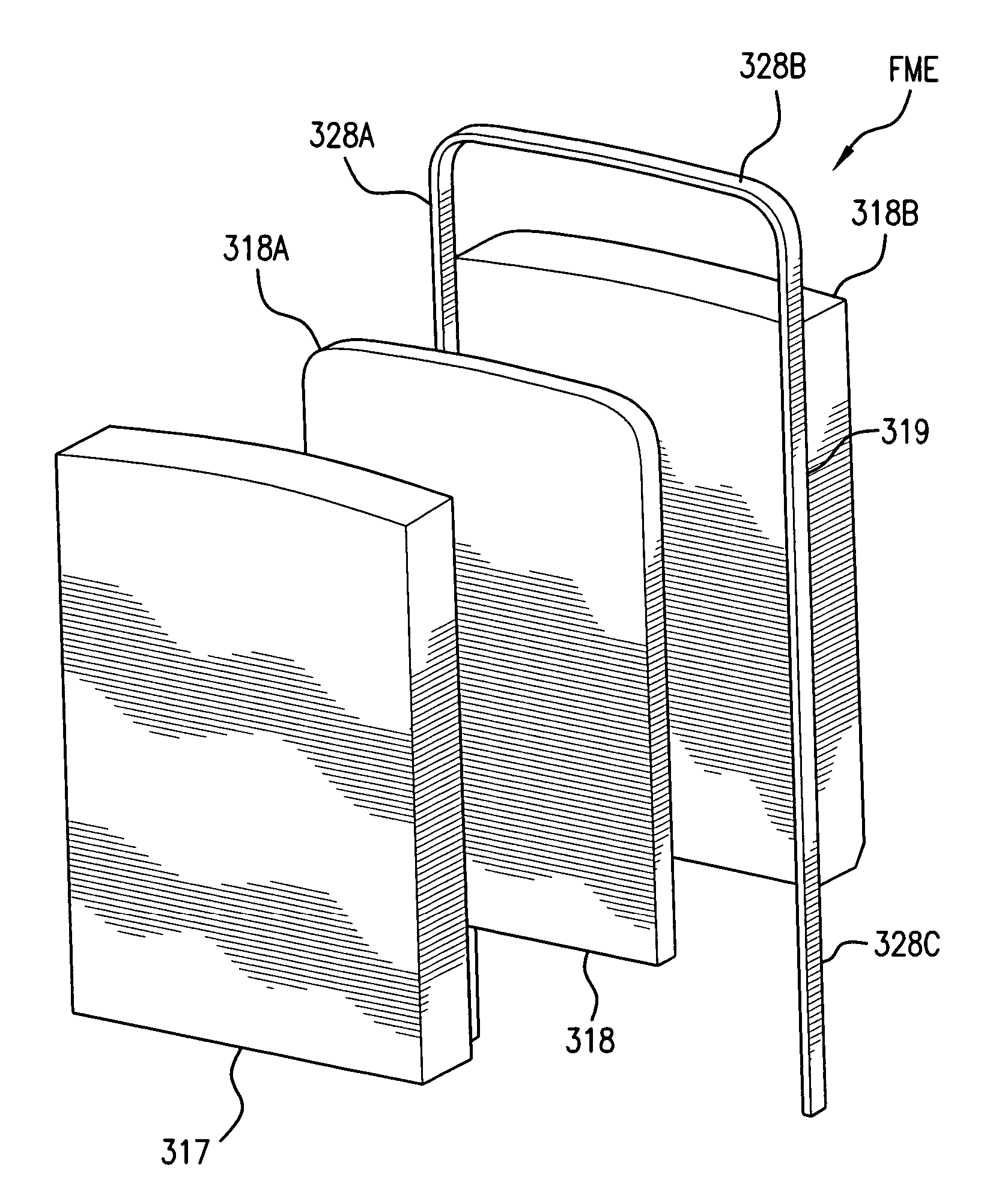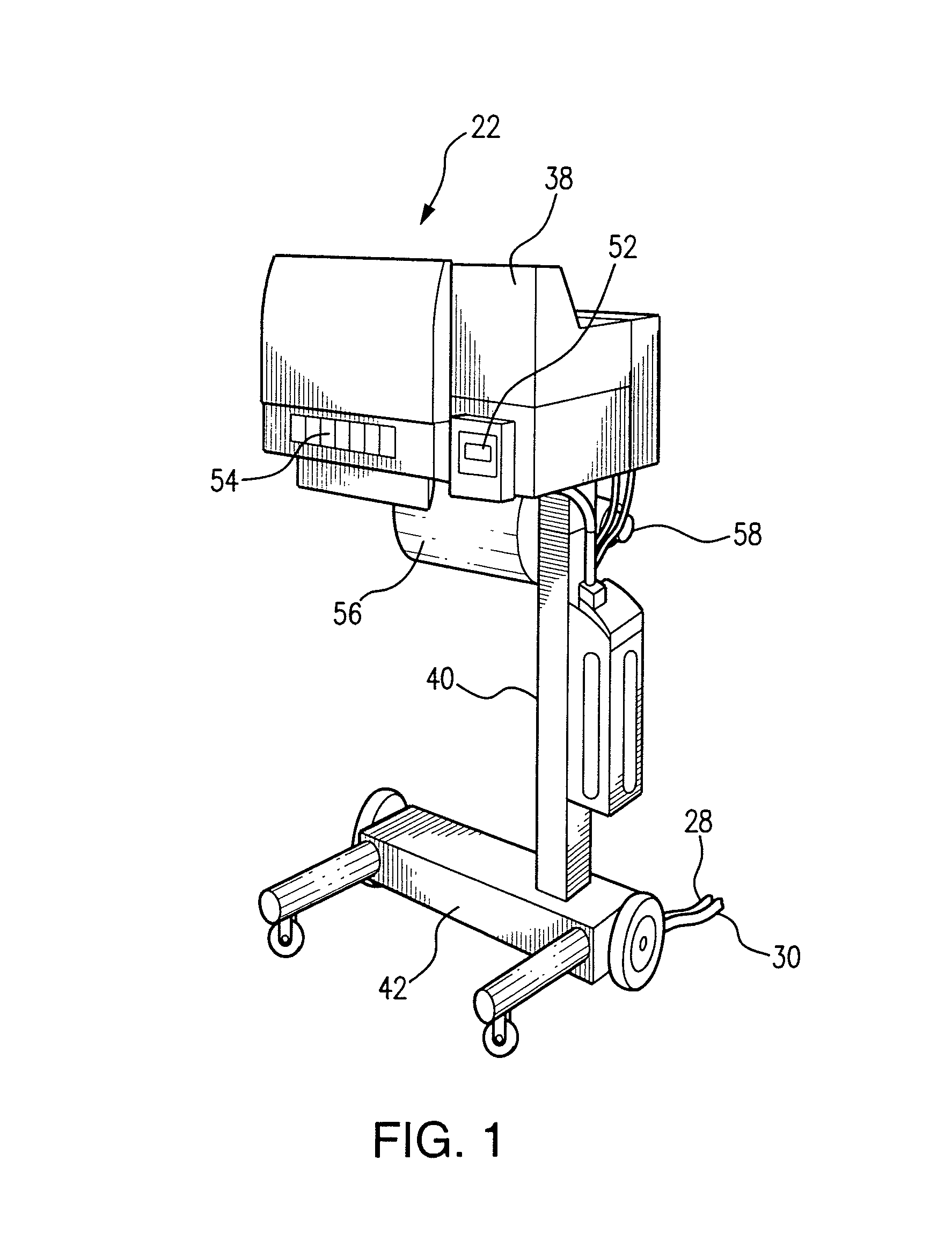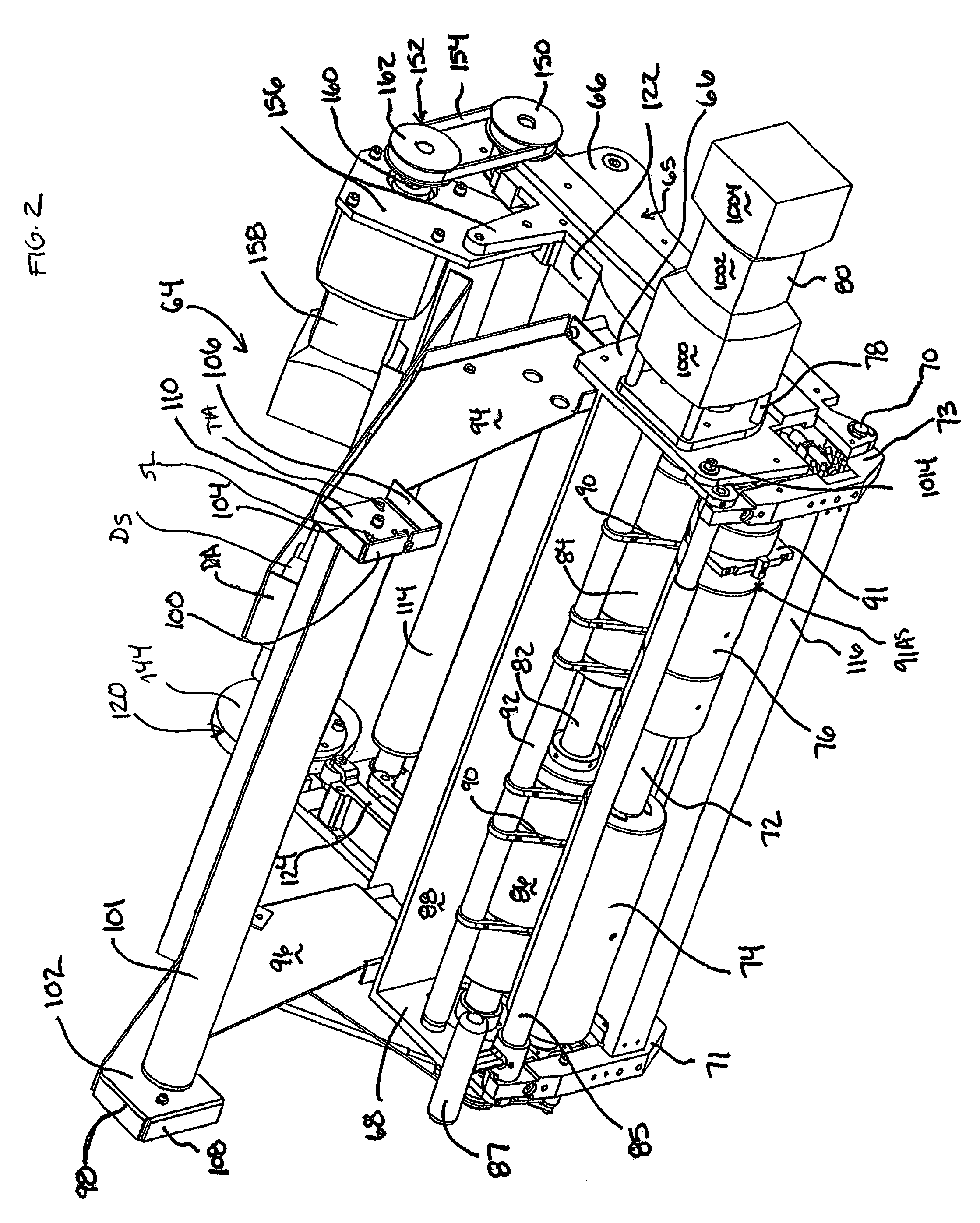Sealing device
a sealing device and sealing wire technology, applied in the direction of heating elements, electric/magnetic/electromagnetic heating, manufacturing tools, etc., can solve the problems of difficult maintenance (e.g., heater wire replacement) and high cost, and achieve the effect of avoiding winding and breakage after a few revolutions
- Summary
- Abstract
- Description
- Claims
- Application Information
AI Technical Summary
Benefits of technology
Problems solved by technology
Method used
Image
Examples
embodiment 91
[0156]FIGS. 8 to 67 illustrate in greater detail an embodiment of edge sealer assembly combination 91AS (with two different edge seal types referenced as 91 and 91′ with the letter “A” added to represent components of the second edge sealer assembly embodiment 91′). Edge sealer assembly combination 91AS comprises first and second sub-rollers 1100 and 1102 and edge sealer assembly 91 having edge sealer (or arbor assembly) 1106 on the film contact side of the driven roller and support base (or arbor base) 1108 on the opposite side. FIG. 14 shows each sub-roller 1100 and 1102 having a pocket cavity 1110 and 1112. FIGS. 18 and 20 illustrate sub-roller 1102 with pocket cavity and with the cavity interior surface 1114 having a pair of screw holes 1116 spaced circumferentially (diametrically) around it, that open out at the other end as shown in FIG. 18. Thus, edge seal roller 1102, which is positioned on the side of the edge seal assembly 91 that is closest to the center of elongation of ...
third embodiment
[0199]FIG. 68 illustrates third embodiment edge sealer assembly 91″ of the present invention which, in a preferred embodiment, is configured as an arbor assembly like the two above described first and second edge sealer embodiments utilized with roller mounts in edge seal assembly combinations 91AS′ or some alternate mounting means to place the sealing device at the desired position relative to the film material being sealed. Edge sealer assembly 91″ comprises edge sealer 310 housing body or “arbor body”311 which, in the illustrated preferred embodiment, is formed of an electrically conductive material (e.g. steel) and as a monolithic body with a film-side peripheral edge 3100. A steel arbor body also provides the benefits of low flexibility (e.g., steel, as in a hardened steel, is in the order of 100 times stiffer than “Acetal” plastic). Edge 3100 is preferably formed of an overall convex contour with a less convex or planar intermediate face or presentation section 3101 being prov...
PUM
| Property | Measurement | Unit |
|---|---|---|
| surface temperatures | aaaaa | aaaaa |
| diameters | aaaaa | aaaaa |
| resistance | aaaaa | aaaaa |
Abstract
Description
Claims
Application Information
 Login to View More
Login to View More - R&D
- Intellectual Property
- Life Sciences
- Materials
- Tech Scout
- Unparalleled Data Quality
- Higher Quality Content
- 60% Fewer Hallucinations
Browse by: Latest US Patents, China's latest patents, Technical Efficacy Thesaurus, Application Domain, Technology Topic, Popular Technical Reports.
© 2025 PatSnap. All rights reserved.Legal|Privacy policy|Modern Slavery Act Transparency Statement|Sitemap|About US| Contact US: help@patsnap.com



